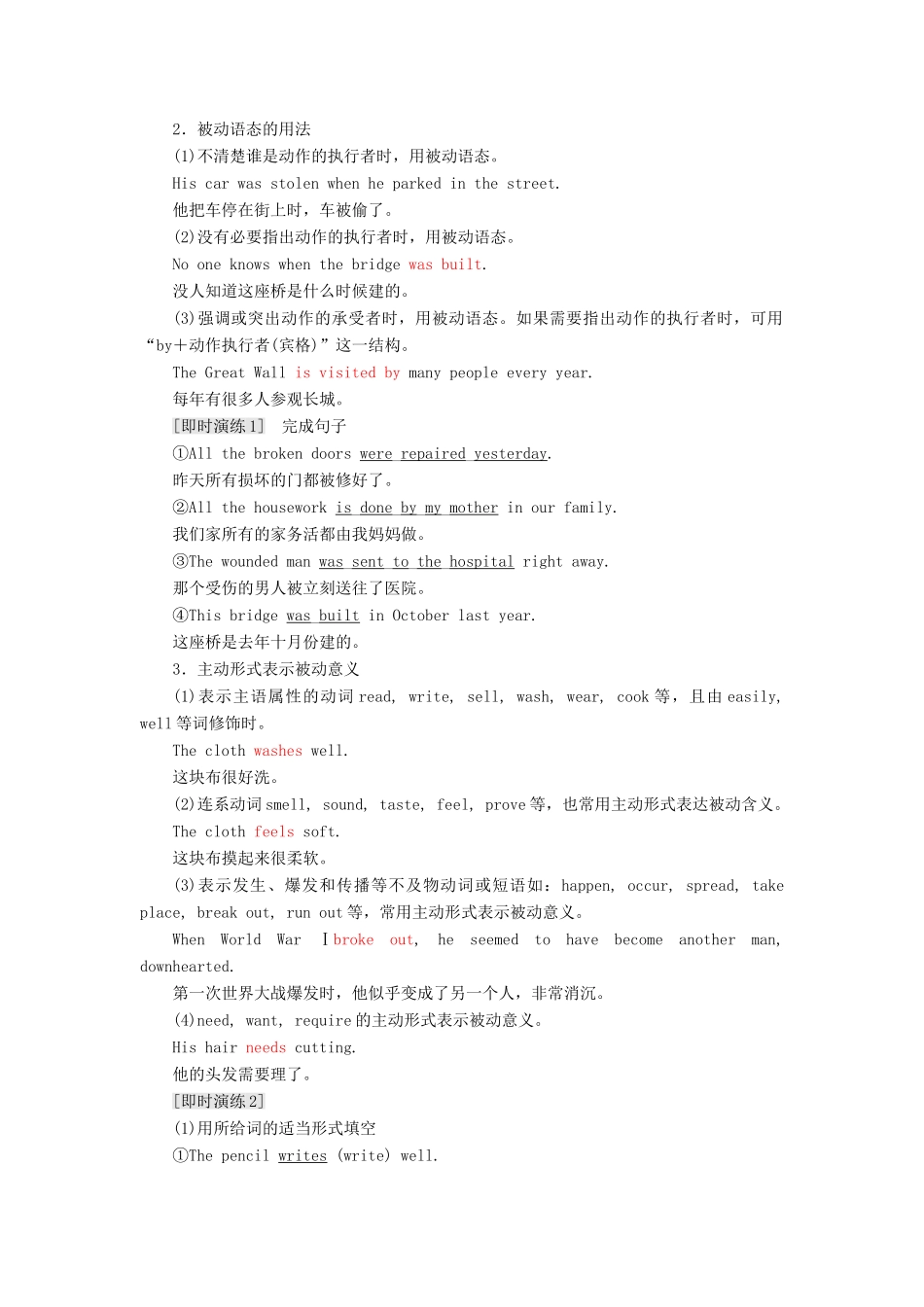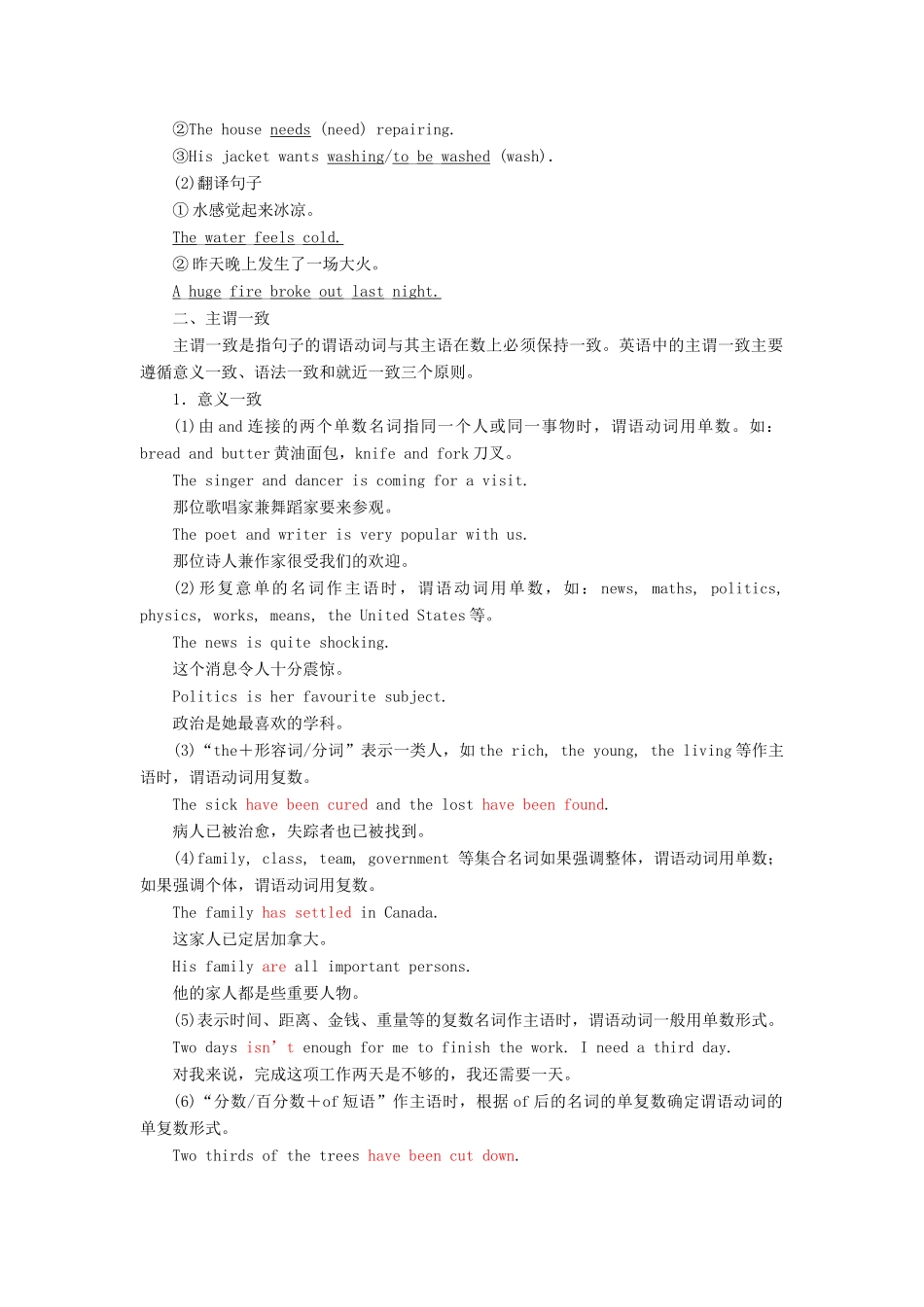Module 1 Europe Section Ⅲ Grammar 被动语态和主谓一致语法图解探究发现①Paris is visited by more than eight million tourists every year. ②The Parthenon was built during this period.③The fish tastes delicious.④This coat washes easily.⑤My family lives in Cardiff.⑥The class were very interested in Mr Zhang’s teaching.⑦Neither he nor you were allowed to go out at night.⑧Not only he but also all his family are keen on concerts.⑨California, along with Florida and Hawaii, is among the most popular US tourist destinations.⑩The students along with their teacher are going there on foot.[我的发现](1)① 句采用了一般现在时的被动语态,其构成形式为:am/is/are + done 。(2)② 句采用了一般过去时的被动语态,其构成形式为:was/were + done 。(3)③④ 句中谓语动词用主动形式表示被动意义。(4)⑤⑥ 句中,family, class 等集合名词表示整体时,谓语动词用单数;表示个体时,谓语动词用复数。(5)⑦⑧ 句中,neither ... nor ... 或 not only ... but also ... 连接并列主语谓语动词的单复数要与靠近它的主语保持一致。(6)⑨⑩ 句中,主语后带有 along with 等短语时,句子的谓语动词应与原主语的单复数保持一致。一、一般现在时和一般过去时的被动语态1.一般现在时和一般过去时被动语态的基本构成(1)一般现在时的被动语态的构成:am/is/are+done。I am asked to copy these English words for ten times.我被要求把这些英语单词抄十遍。(2)一般过去时的被动语态的构成:was/were+done。The university was founded in 1901.这所大学始建于 1901 年。2.被动语态的用法(1)不清楚谁是动作的执行者时,用被动语态。His car was stolen when he parked in the street.他把车停在街上时,车被偷了。(2)没有必要指出动作的执行者时,用被动语态。No one knows when the bridge was built.没人知道这座桥是什么时候建的。(3)强调或突出动作的承受者时,用被动语态。如果需要指出动作的执行者时,可用“by+动作执行者(宾格)”这一结构。The Great Wall is visited by many people every year.每年有很多人参观长城。[即时演练 ...


